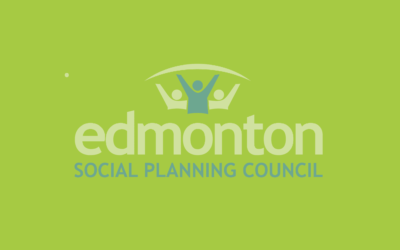Research Update: Privatization Pressure in Alberta Health Care

Note: This is excerpted from the March 2021 edition of our “Research Update” publication. The Edmonton Social Planning Council, in collaboration with our volunteers, strives to provide stakeholders and community members with up-to-date reviews, prepared by our volunteers, on recently published social research reports and publications.
A review by Jessica Shannon
Authored by Alison H. McIntosh, an Edmonton-based academic researcher and organizer, Privatization Pressures in Alberta Health Care was published by Parkland Institute (2020), an Alberta research network that examines public policy issues.
McIntosh discusses the current pressures to expand privatization within three areas of Alberta’s health care system: diagnostic laboratory services, home care, and telehealth. Revealing parallels between the United Conservative Party’s (UCP) privatization effort and public sector budget cuts with Klein-era neo-liberal policies, McIntosh highlights a reoccurring pattern of adverse effects that impact working conditions, equitable access to care, and quality of care for Albertans.
Diagnostic Laboratories
The Klein-era of the 90s saw massive cuts to diagnostic laboratories, leading to a restructure and ultimately a “brain drain” of experts from the province. The consequences resulted in a shortage of skilled workers who could run these labs. Diagnostic errors increased—which remains an issue. Even so, McIntosh reports that there has been some success in moving service delivery to private non-profit labs. However, it is difficult to compare costs between private non-profit and for-profit labs at this time. The author recommends greater government oversight of transparency and accountability within the for-profit private sector’s health services, as well as provisions for standards of care and necessary skill level.
Home Care
The privatization of home care, McIntosh reports, is problematic because profit margins in this sector are low. Such margins underscore how home care workers and recipients—often already marginalized populations—are placed at further risk when this vital service is privately contracted out. McIntosh recommends the expansion of the Canada Health Act to accommodate formal care, insured under universal health care. Moreover, unions should increase capacity for bargaining power with governments. Both measures would ensure equal access to care for all patients and improve working conditions and living wages for workers.
Bolstering her argument, McIntosh points out that home care is a tool meant to promote independence within homes and communities. It is also preventative in measure, cost-wise and health-wise. For events related to long-term care, a “one-day stay in the hospital can cost up to $1,000, while a day in a long-term care facility costs around $130, and home care costs about $55″ (p.16). Furthermore, those receiving formal home care experience increased physical and mental health. There lies a balance between fiscal and qualitative measures, however, the current UCP budget does not reflect this balance. Rather, it fixates on the fiscal at the expense of the health outcomes and needs of Alberta’s aging population.
McIntosh also reports that expanding public home care services could greatly improve the lives of not just recipients of this service but also the lives of informal caregivers, freeing them up to generate more income and pension contributions. A better quality of life for both parties—such are the benefits of a public form of home care.
Telehealth
Telehealth is a tool meant to expand access to care. However, McIntosh points out that the target populations of telehealth services (e.g., rural populations or seniors) have not been reached. Instead, younger urban populations are utilizing these services. Moreover, McIntosh reports that telehealth is often overused due to ease of accessibility, leading to a decrease in quality of care. The danger is that publicly funded health care sees an increased usage of these services, yet this rise in frequency and cost does not necessarily correlate to improvements in care or equitable access.
Discussion
McIntosh provides an informative overview of relevant issues regarding health care privatization in Alberta, related to three key areas that the UCP government wishes to capitalize on. She clearly discusses what these intentions mean for Albertans and their health, doing well to show that the debate to privatize needs go well beyond questions concerning “the bottom line.” A sharp reminder echoed through the report: cuts to public funds means costs are recuperated elsewhere, whether through working conditions, quality of care, or patient outcomes—all of which are ultimately cuts in quality of life for Albertans. The irony is that these three areas ought to be considered as the primary measures for a sound health care system—not only fiscal measures.
Fiscal considerations alone, the report shows, clearly fall short of providing adequate care for Albertans. Profit motives do not translate well into motives to improve outcomes for those involved with health care services—whether for staff members, patients, or informal caregivers. That said, McIntosh does well to show that fiscal concerns are important too, and that in some areas, such as home care, both may be possible.
McIntosh makes a clear case for the power of investing in a public service and how a healthy society is a prosperous society. Her report begs the question: if government support and oversight—as well as transparency, fair wages, expertise, and standards of care—are all related to health outcomes, can we afford to neglect them? Can we really afford the many and varied hidden costs of privatization?
Publication Source:
McIntosh, A. H. (2020). Privatization pressures in Alberta health care: Laboratory services, home care, and telehealth under austerity. Parkland Institute. https://d3n8a8pro7vhmx.cloudfront.net/parklandinstitute/pages/1801/attachments/original/1599505978/privatization_pressures.pdf?1599505978
Get to know our volunteer:
Jessica has a background in Kinesiology and Physical Therapy from Dalhousie University (2016) and the University of Alberta (2019), respectively. A local to Edmonton, Jessica cares about her community and how health and wellness policy impacts the activity, mobility, and well-being of its citizens.
Click the image to view the document online.


